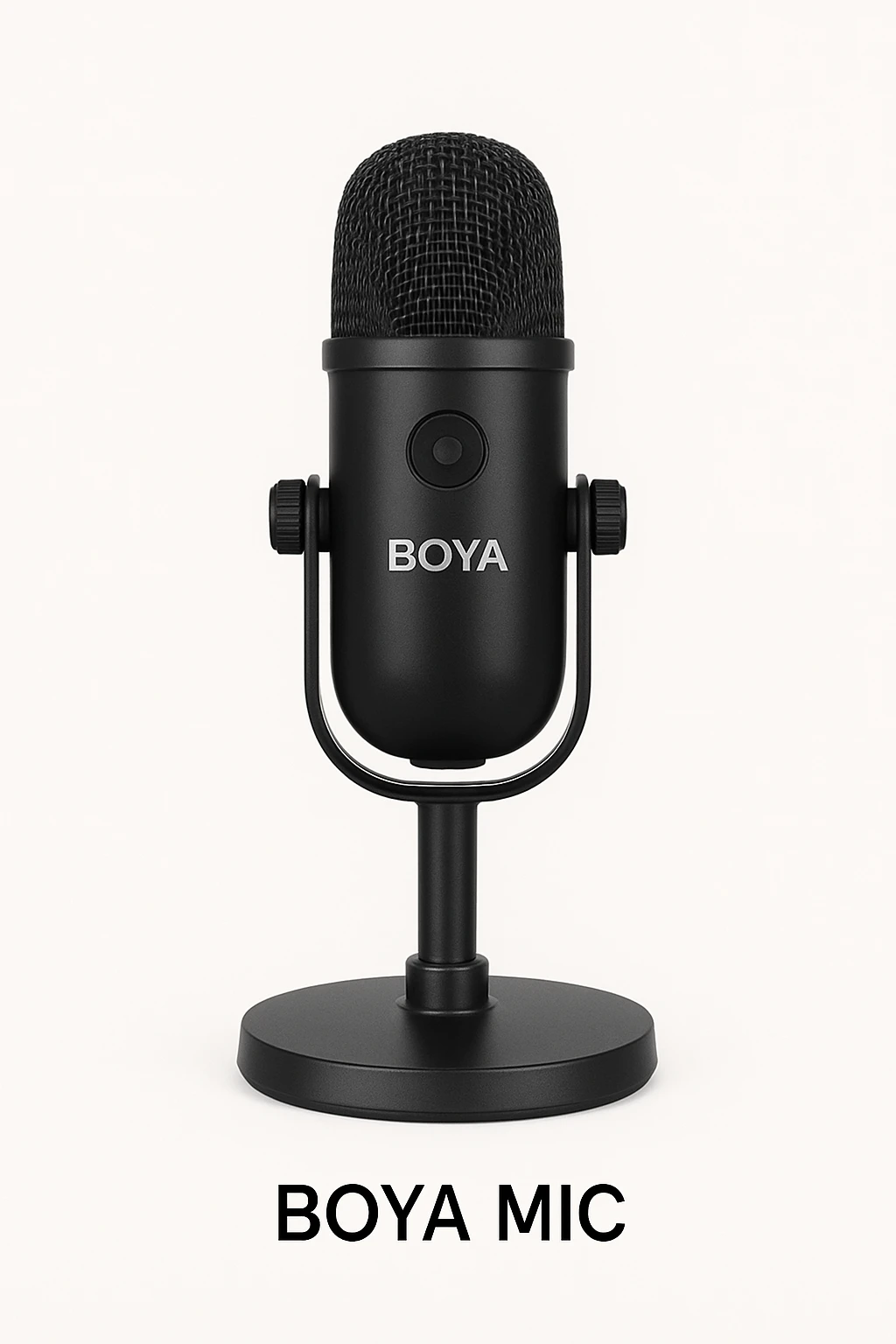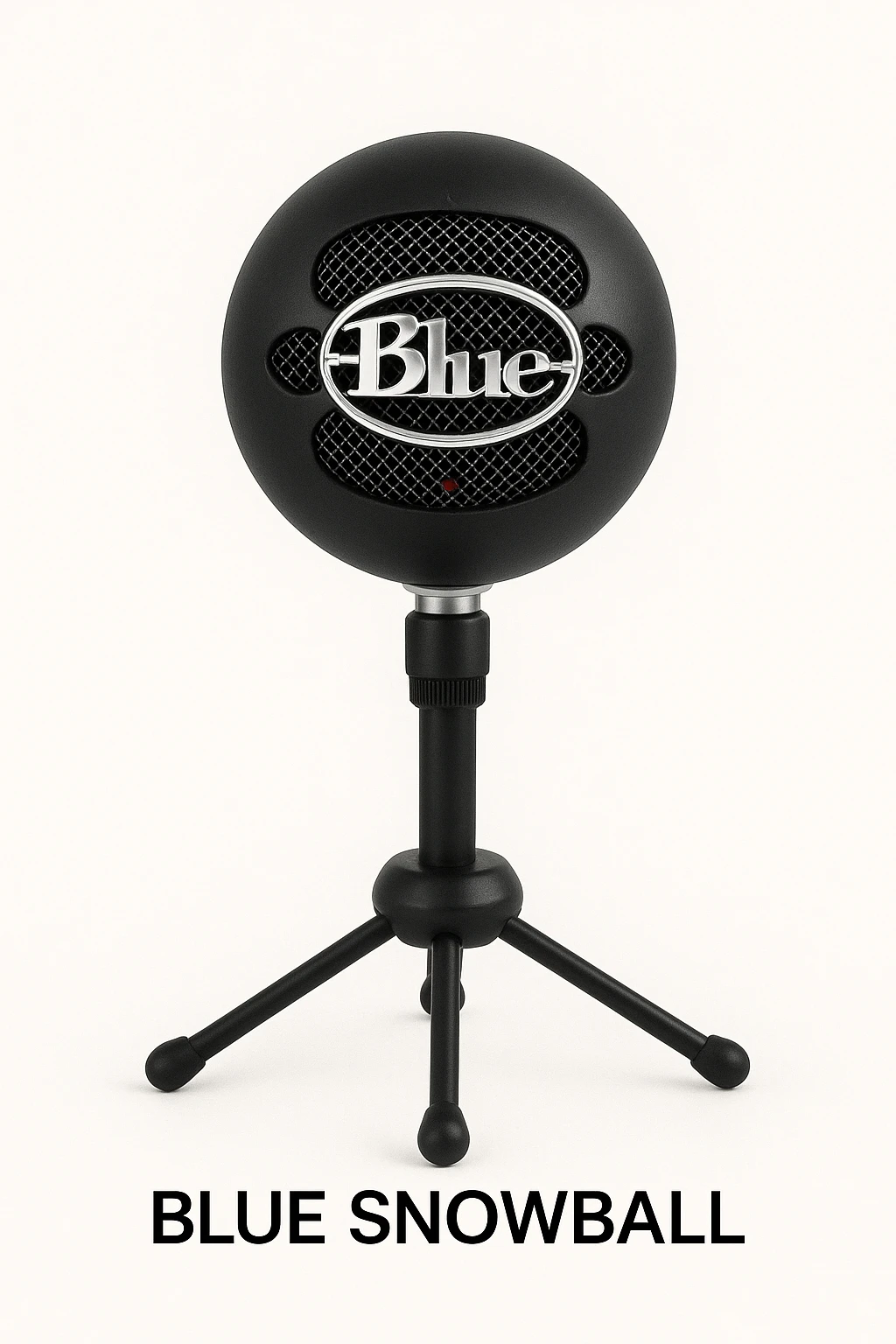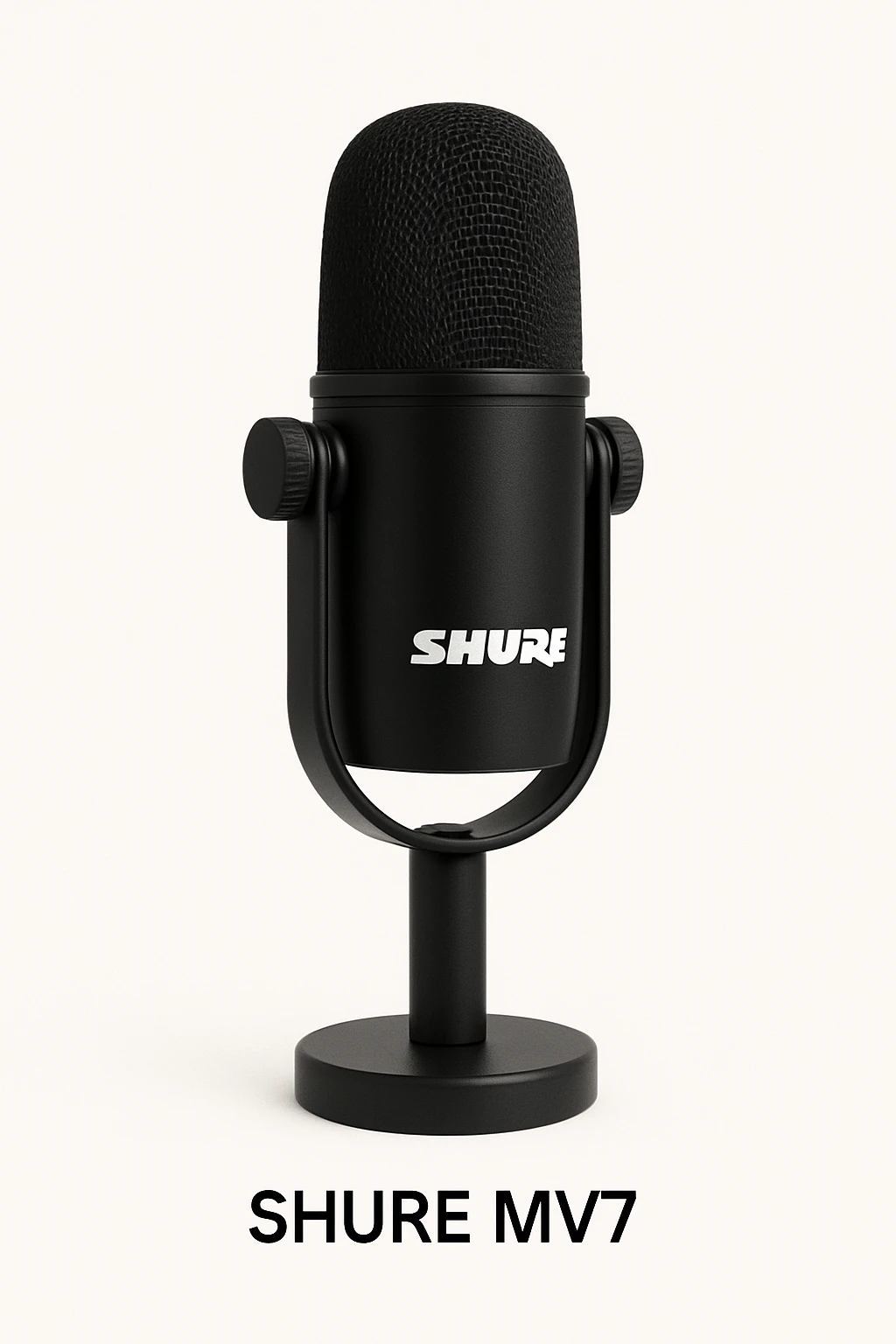Audio quality is one of the most crucial elements of a successful YouTube video. It’s often said that viewers might tolerate poor video quality, but poor audio? They’ll click away instantly. Whether you’re starting a new channel or upgrading your current gear, choosing the right microphone can set you apart from the crowd. Below, we break down six of the best microphones available today for YouTubers, including everything from budget-friendly options to professional-grade tools.
1. BOYA BY-M1 Lavalier Microphone
The BOYA BY-M1 is an incredibly popular choice for entry-level creators, especially those shooting videos with smartphones or DSLR cameras. This omnidirectional lavalier mic is designed for flexibility—it comes with a long 6-meter cable and a standard 3.5mm TRRS jack, which means it’s compatible with almost any device, including Android phones, DSLRs, camcorders, laptops, and audio recorders. It includes a small controller with a switch to toggle between camera and smartphone modes, powered by an LR44 battery. The omnidirectional pickup pattern means it captures sound from all around the mic, which can be great for natural audio pickup in interviews or classroom-style videos, but it also means you need to be cautious of background noise in less controlled environments. Audio quality is clear and warm for its price point, and it’s more than capable of handling speech-heavy content like tutorials, interviews, or reaction videos. The biggest downside is the wire—while the long cable gives flexibility in positioning, it can become a hassle to manage during outdoor shoots or when movement is involved. Additionally, its build quality is fairly basic, and the battery unit feels a little fragile. However, if you’re just starting out and need a reliable mic under ₹1,000, the BOYA BY-M1 offers amazing value for money. For creators making talking-head videos, educational content, or interviews, it’s a plug-and-play solution that significantly upgrades your audio without breaking the bank.

2. Blue Snowball iCE USB Microphone
The Blue Snowball iCE is a standout USB microphone that offers exceptional audio clarity for beginners and intermediate YouTubers at a budget-friendly price. Designed by Blue Microphones, a brand trusted by podcasters and streamers globally, this mic delivers solid studio-like audio without any of the complications that come with more professional setups. It features a custom cardioid condenser capsule that focuses on capturing sound directly in front of the mic, minimizing background noise and echo—perfect for voiceovers, gaming commentary, online teaching, or Zoom recordings. With its simple plug-and-play functionality, it requires no drivers or software, and you can get started right away by connecting it to your PC or Mac using a standard USB cable. It also comes with an adjustable tripod stand that’s ideal for desktop setups. The sound quality is crisp, with a rich tone that’s great for speech. Unlike built-in laptop mics or generic headset mics, the Blue Snowball iCE offers a noticeable leap in vocal clarity and professionalism. However, it only offers a cardioid pickup pattern, so it’s not suitable for multi-person recordings or interviews where audio needs to be captured from different directions. Additionally, it lacks real-time headphone monitoring and onboard controls for gain or mute, which might be missed by more advanced users. The plastic build may also feel slightly less premium compared to other Blue models like the Yeti. But despite these limitations, the Blue Snowball iCE delivers incredible sound quality for its price. It’s lightweight, portable, and ideal for creators who want a clean audio setup for their home studio without investing in XLR mics or audio interfaces. For anyone making voiceover videos, conducting interviews via Zoom, or doing basic podcasting, the Blue Snowball iCE is a solid step up from built-in mics and a great way to give your audio a professional edge.

3. Blue Yeti USB Microphone
The Blue Yeti is one of the most popular USB microphones among YouTubers, podcasters, and live streamers—and for good reason. This mic is often seen as the gold standard in the mid-range USB microphone category. What sets the Blue Yeti apart is its versatility. It features four selectable pickup patterns: cardioid, omnidirectional, bidirectional, and stereo. This means it’s capable of handling a wide variety of recording situations—from solo vlogs to interviews to musical performances. The cardioid mode is ideal for solo voice recording, capturing sound from the front while rejecting noise from the sides and back. Omnidirectional picks up sound equally from all directions, useful for roundtable discussions. Bidirectional is great for face-to-face interviews, while stereo mode provides rich audio for instruments or ASMR content. The Yeti also has onboard controls for gain, mute, and volume, and includes a headphone jack for real-time monitoring. Its plug-and-play USB connection works flawlessly with both Windows and macOS systems, eliminating the need for external audio interfaces. Build-wise, the mic is solid and heavy with a premium metal finish. The included stand is sturdy, though it’s advisable to pair it with a boom arm for more flexibility. In terms of audio quality, the Yeti delivers rich, full-bodied sound with excellent clarity—perfect for voice recordings. However, its sensitivity can be a double-edged sword. It picks up background noise if you’re in an untreated room, so positioning and environment matter. Also, while it’s portable, it’s quite bulky, which might not be ideal for creators on the go. Overall, the Blue Yeti is an all-in-one solution that provides professional-level sound quality with zero learning curve. It’s ideal for creators who want a plug-and-play mic with multiple functions and excellent build. Whether you’re recording YouTube videos, podcasts, voiceovers, or streaming live, the Blue Yeti is a reliable companion that delivers consistent, high-quality results.
4. Shure MV7 Hybrid USB/XLR Microphone
The Shure MV7 is a professional-grade microphone built specifically with content creators in mind. Inspired by the legendary Shure SM7B, the MV7 brings broadcast-level sound into a more accessible and versatile package. What sets this mic apart is its hybrid connectivity: it supports both USB and XLR outputs, making it suitable for beginners and professionals alike. If you’re starting out, you can plug it directly into your computer using USB. As you grow, the XLR option allows integration with audio interfaces and mixers. The Shure MV7 also comes with voice-isolating technology, which means it captures your voice clearly even in noisy environments. This makes it ideal for home setups that lack soundproofing. The built-in touch panel lets you adjust gain, monitor levels, mute the mic, and more—all without needing third-party software, although you can enhance control using the ShurePlus MOTIV app. The mic includes a headphone jack for real-time monitoring, a crucial feature for podcasters and streamers. In terms of audio quality, the MV7 delivers a warm, natural, and rich tone that rivals high-end studio mics. Its cardioid pattern rejects ambient noise, focusing on your voice for crystal-clear sound. Build-wise, the mic feels premium with its all-metal construction and modern aesthetic. However, it’s not the most budget-friendly option. The price tag can be a stretch for hobbyists or casual YouTubers. Also, unlike the Blue Yeti, it doesn’t offer multiple pickup patterns, which may limit its use in group settings. Another minor downside is the USB cable length, which may require an extension for certain setups. But if you’re serious about your content or looking to upgrade from a beginner mic, the Shure MV7 is a worthwhile investment. It offers the perfect mix of simplicity, performance, and future-proofing, making it ideal for YouTubers, podcasters, musicians, and live streamers aiming for studio-quality audio in a compact form.

5. Affordable Podcast Mic Kit (Generic Studio Mics)
Affordable podcast microphone kits can be a game-changer for creators on a tight budget looking to start a podcast or YouTube channel. These kits typically include a condenser microphone, shock mount, pop filter, boom arm, and sometimes even a sound card, offering a complete audio setup at an entry-level price. These mics are usually cardioid in nature, meaning they capture sound from the front while reducing noise from the sides and rear. This is ideal for solo recordings, voiceovers, and tutorials. Many of these affordable mics connect via USB or XLR, depending on the model, offering some flexibility in terms of setup. The pop filter helps reduce plosive sounds (like “P” and “B”), while the shock mount minimizes vibrations from the desk or movement. Sound quality is decent—certainly better than a laptop or phone mic—but don’t expect studio-level clarity. These mics often lack advanced features like built-in gain control, monitoring options, or multi-pattern recording. Still, the bundled accessories are a huge plus, especially for those just starting and unsure what to buy. However, quality can vary significantly between brands, and durability might be a concern. Noise handling isn’t always the best, and you may need to work on room acoustics or use post-production tools to clean up audio. But for under ₹2,500–₹3,000, these kits offer tremendous value and are perfect for hobbyists or educators creating long-form content. They’re also a great stepping stone—enough to learn the ropes of recording, mic placement, and editing before upgrading to a premium model. If you’re launching a podcast, online class, or voice-over channel and want an all-in-one mic setup without burning a hole in your wallet, an affordable podcast mic kit is a smart and practical choice to get started.

6. Explore Wireless Collar Mic
Wireless collar microphones like the Explore Wireless Mic have gained popularity among YouTubers, especially those who shoot a lot of outdoor or on-the-move content. These mics come with a small transmitter that clips to your collar and a receiver that plugs into your smartphone or camera, enabling completely hands-free, wire-free recording. This freedom of movement makes it ideal for vloggers, fitness trainers, travel creators, and even teachers conducting demos. The mic usually features noise reduction technology to eliminate unwanted background sounds, and many models now offer real-time monitoring via an additional headphone jack. Its compact size means it’s virtually invisible in frame, allowing creators to focus on their performance rather than gear. Audio quality is fairly good, with a clear emphasis on voice clarity. While it won’t match a Shure MV7 or Blue Yeti in terms of richness or depth, it performs admirably in mobile setups where convenience is key. However, wireless mics do have their limitations. Connectivity can sometimes be disrupted by interference or physical barriers, and the mic’s effective range is limited—typically around 20–30 feet. Battery life is another consideration; while most models last several hours on a full charge, you need to remember to charge both the transmitter and receiver. Additionally, sound quality can degrade if you move too far from the receiver or block the signal. Despite these caveats, the Explore Wireless Collar Mic is an incredibly practical tool for creators who are constantly moving, filming outdoors, or shooting reels and short videos. It’s also great for interviews and live sessions on social media. Affordable, portable, and easy to use, this mic helps deliver professional-sounding audio without the hassle of wires or bulky equipment, making it an essential addition to any mobile YouTuber’s toolkit.
Conclusion: Which Mic Should You Choose?
Here’s a quick cheat sheet:
| Use Case | Recommended Mic |
| Beginner YouTuber on a budget | BOYA BY-M1 or Blue Snowball |
| Podcaster or Pro YouTuber | Blue Yeti or Shure MV7 |
| On-the-go vlogging | Explore Wireless Collar Mic |
| Budget studio setup | Affordable Podcast Mic |
| Advanced creators with multi-purpose needs | Shure MV7 (USB + XLR) |
Investing in a mic that suits your needs will elevate your YouTube game and build trust with your audience.
FAQs
1. Which mic is best for recording YouTube videos on a phone?
BOYA BY-M1 or Explore Wireless Collar Mic are perfect for mobile recording.
2. Do I need an audio interface for these mics?
Only XLR mics (like Shure MV7 when used in XLR mode) require an interface. USB mics like Blue Yeti do not.
3. Are wireless mics good for YouTube?
Yes, especially for vloggers and fitness instructors. But make sure to stay within range for stable audio.
4. What’s the difference between cardioid and omnidirectional mics?
Cardioid mics pick up sound from the front (ideal for voice recording). Omnidirectional mics capture sound from all directions (not ideal in noisy settings).
5. Can I use these mics for podcasting too?
Absolutely! Mics like Blue Yeti and Shure MV7 are podcasting favorites.



